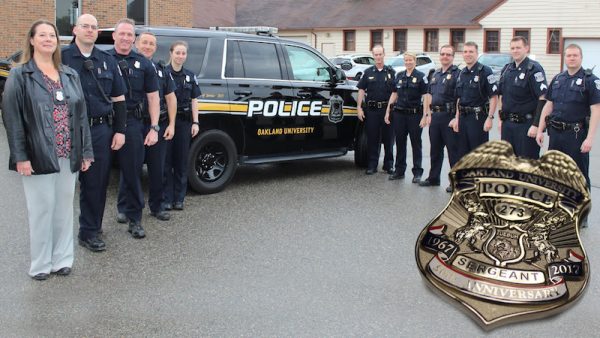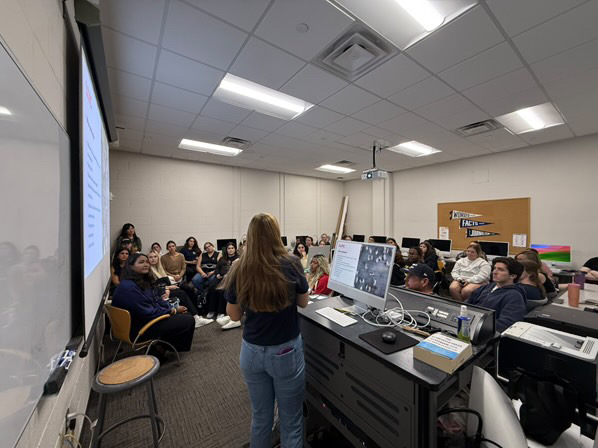Construction reduces outdoor research areas
Students visit the preserves to study microbes and ecosystems.
As construction continues on Oakland University’s campus, buildings and trees compete for attention, sometimes with fatal results.
But it’s not just ecosystems that are destroyed – so are opportunities for students and faculty to study in these outdoor classrooms.
Scott Tiegs, associate professor of biological sciences, has watched the battle unfold. Since he began teaching at Oakland in 2008, one on-campus wetland has been filled in and another has been paved over and was turned into P37.
“I wish there was better communication between the people who decide where these parking lots go and the people who make use of these natural areas,” Tiegs said. “I don’t think it’s too idealistic of me to hope for that. We have lots of people on campus who have expertise in things like aquatic ecology, stream ecology, amphibian ecology.”
There is one part of campus that appears to be safe: the Oakland University Biological Preserve, two chunks of land offering 110 acres of ecology-class paradise. The areas are collectively referred to as the “preserve,” and the Galloway Creek snakes through.
Oakland’s extensive natural areas are gems not available on many college campuses, especially those that are woven into cities. Tiegs said some students come to Oakland because of the preserve.
Classes that visit the preserve include those in ecology, biology and botany, Tiegs said. During the 2015-16 academic year, about 1,000 students used the preserve. Tiegs estimated about a dozen professors incorporate the preserve into their lesson plans.
While the preserve is a snippet of Oakland’s 1,443 acres, students study everything from microbes to ecosystems. Many have the opportunity to perform research.
Kennedy Phillips, a senior studying biology, and Jasmine Mancuso, a third year studying environmental sustainability and resource management, use leaves from several cottonwood trees near P37 that have since been cut down to accommodate Oakland’s plan to increase parking. The two use the leaves to study the impact of New Zealand mud snails on decomposition rates. While this invasive species is absent from Oakland’s preserve, Phillips and Mancuso introduce the leaves to an environment that includes these snails to study their effect on the decomposition of the leaves.
The two also use the preserve for Oakland’s Ecology Club – Phillips is the president and Jasmine Mancuso is the secretary. Also on the team are Morgan Morin, a junior studying environmental science and the upcoming vice president, and Chandler Mancuso, a third year studying environmental science and the outreach coordinator. Tiegs is the adviser.
The club planned a Bio Blitz for May 20, during which faculty will help students identify species in the preserve. The goal is to create a catalog of these species. Each professor will work to spot species associated with his or her specialty.
The group may find more species than expected – Chandler Mancuso said some species were recently found to be living in the preserve.
However, Morin found a less pleasant surprise – a bald spot in a wooded area that was filled with trash, including old tires.
Further damage to Oakland’s natural areas could discourage faculty and staff from coming to or staying at Oakland, Phillips and Morin said. The two added that work in the field helps students figure out their interests.
“It definitely paints a real picture of what is out there that you’re learning about,” Morin said.
The preserve also serves the community – people hike, jog and birdwatch in the natural areas.
“To tear it down degrades the integrity of the university,” Jasmine Mancuso said.






